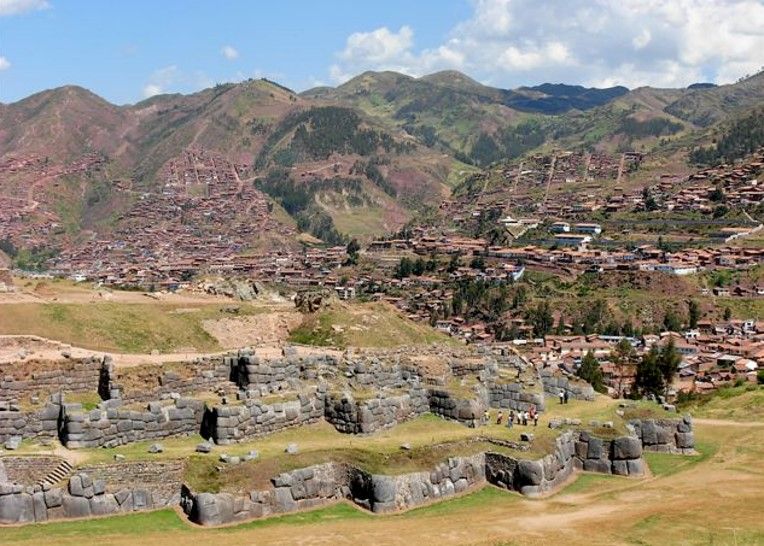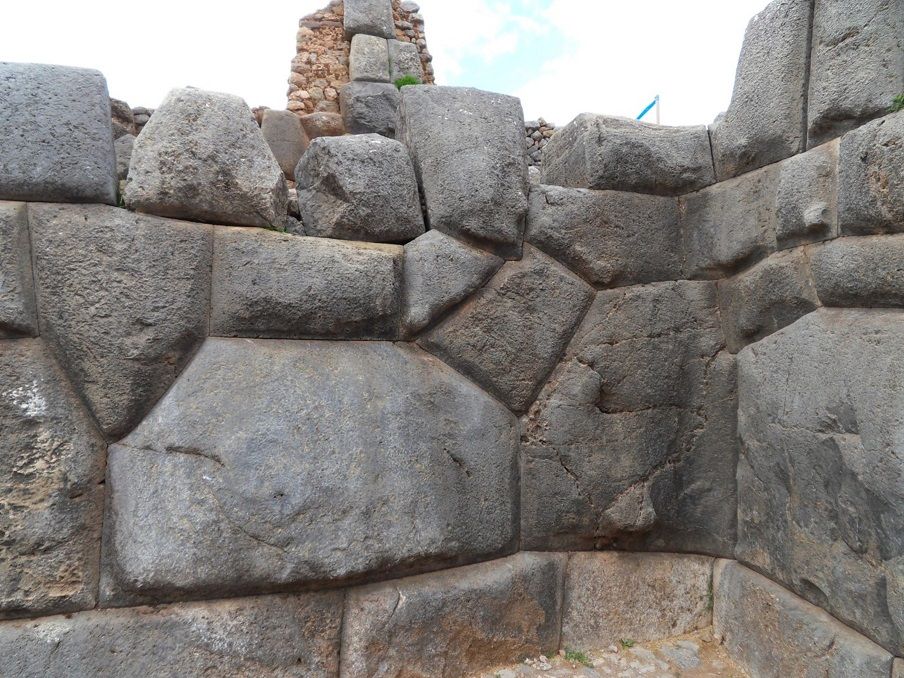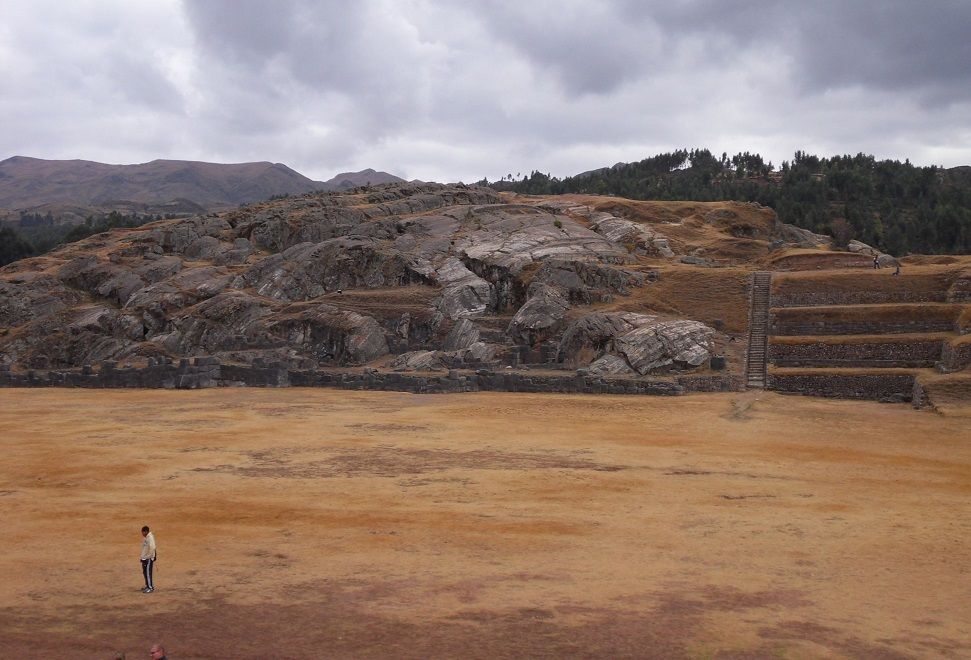


|
|
|
|||||||||||||||
|
|
||||||||||||||||
|
|
|||
|
|
Cusco Sacsayhuaman 
Sacsayhuaman is an Inca fortress with ramparts consisting of three large parallel walls constructed of large stones which zigzag for over 400m. Located just outside of Cusco, the site is situated on a steep hill at an altitude of 3,701 m (12,142 ft) overlooking the city. The fortified complex has a wide view of the valley to the southeast. Archaeological studies indicate that the earliest occupation of the hilltop dates to about 900 CE. The name Sacsayhuaman is translated as 'speckled falcon' or 'speckled head' as Cusco was set out in the form of a puma whose head was the hill of Sacsayhuaman. It is believed to have originated around the time of Pachacuti the man who founded the Inca Empire and built Machu Picchu. It has been suggested that the bottom terrace represents the snake world, the second terrace represents the puma and the third represents the condor world. The walls which are made up of blocks up to 8.5m high and weighing nearly 300 tonnes are fitted together with incredible accuracy, with the workers carefully cutting the boulders to fit together tightly and without the use of mortar. This precision, combined with the rounded corners of the blocks, the variety of their interlocking shapes, and the way the walls lean inward, is thought to have helped the ruins survive devastating earthquakes which Cuzco has experienced.  The fortress was constructed on three Terraces in a zig-zag shape by 20,000 men working either in the quarry or on-site. The men who built it were required to do so as a form of community service. Taking over 70 years to construct, the stones, some of which were brought from over 35km away, are placed with razor-sharp precision. The blocks were quarried and shaped using nothing more than harder stones and bronze tools. Marks on the stone blocks indicate that they were mostly pounded into shape rather than cut. Blocks were transported using ropes, logs, poles, levers, and earthen ramps, wheels were not used. Some of the stones still have nodes protruding from them or indentations which were used to help workers grip and move the stone. The rocks were roughly hewn in the quarries and then worked on again at their final destination. The fine cutting and setting of the blocks on site was so precise that mortar was not necessary. Finally, a finished surface was obtained using grinding stones and sand. In a defensive consideration, there is only one small doorway on each terrace which gave access to the interior buildings and towers on the hillside behind. The complex originally, had three towers, Muyucmarca, Sallacmarca and Paucarmarca, the most famous of them, Muyucmarca was a cylindrical turret of 22 meters diameter and 4 levels. Of the turret, only the remains of its base still exist. In front to the three ramparts, there is a flat green plaza (square), which was used with ceremonial purposes. It was from the outcrop across the plaza that the Spanish used to assault the fortification.  Following the rebellion by Manco Inca in 1536 the Inca held Sacsayhuaman as a base in the siege of Cusco until the Spanish broke out and captured the fortress killing its’ defenders. Sacsayhuaman played an important part in the final defeat of the Inca Empire by the Spanish. Following that defeat, the place was abandoned and over 24 years the Spanish dismantle it using the stones to build temples and houses, with many being used in the construction of the Cusco Cathedral, only the stones that were too large to be easily moved remain at the site. In the 20th century the process of preserving the site began and today Sacsayhuaman is one of the main archaeological sites of Cusco and South America. In addition to it being a tourist attraction, the temple is used every year on June 24, to celebrate the Inti Raymi (Fest of the Sun) which has been celebrated in the winter’s solstice since the Inca time. In 1983, Cusco and Sacsayhuamán together were designated as sites on the UNESCO World Heritage List, for international recognition and protection. |
|
|
|
|
|||
All Photographs were taken by and are copyright of Ron Gatepain
| Site Map |